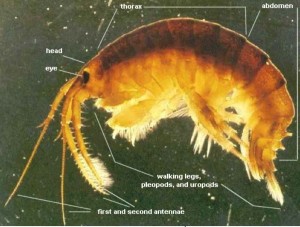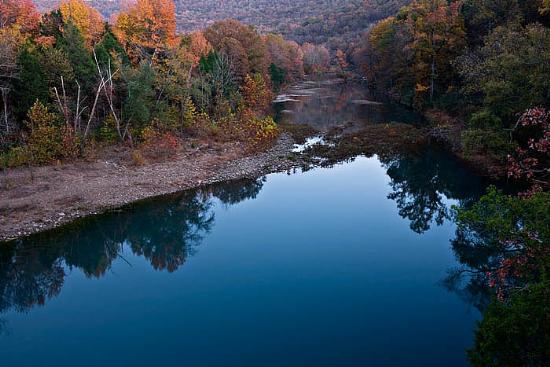The week that was, 9/5-11/2010
Posted on | September 12, 2010 | No Comments

At the news conference announcing Susan Kennedy’s appointment as Chief of Staff, Gov Schwarzenegger said, "We have had incredible accomplishments throughout my administration and I look forward to working with Susan to build upon that foundation and make California once again the golden dream by the sea." Click on the image to be taken to the governor's website and the original announcement in November 2005. Kennedy has been the strategist behind Schwarzenegger's failed water policy.
Schwarzenegger, like all of his predecessors except risk-averse Gray Davis, has tried to mediate the water war and will, like them, leave with the big decisions still to be made. — Dan Walters, Governor will pass the buck on water, Fresno Bee, September 5, 2010
Despite more than three years of meetings and studies, the committee working on the plan has come to little or no agreement on any of the big-ticket questions. — Delta talks going on behind closed doors, Contra Costa Times, September 7, 2010
“I don’t think we can wait for all of these processes.” — Attorney Michael Jackson, Latest Delta suit could pack a wallop, Environmentalists sue state, citing ‘public trust’ statute, Contra Costa Times, September 7, 2010
The water table has dropped 115 feet in the last three years — something that in the past would have taken two decades. — “Chinatown II”? Water bank sued as wells go dry, Kern Co. districts, others say deals were illegal, Fresno Bee, September 5, 2010
… it is interesting to see that for all that The State is mistrusted, private corporations are mistrusted even more. — News commentary, On the public record, September 8, 2010
“I don’t know many people that are dumb enough to take on what I’ve taken on.” — Ed Steffani, manager of the North San Joaquin Water Conservation District, Resignation his own choice, frustrated water district chief says, The Record, September 9, 2010
“Water is gold. We want to continue to find ways to clean the water to cut the imported water cost. We need to reduce reliance on imported water from the Bay Delta.” — Rep Grace Napolitano, Federal government awards $600,000 in water grants for master plan, recycled waste water, Whittier Daily News, September 9, 2010

Killer Shrimp - Dikerogammarus villosus. Source: US Army. Click on the image for a profile of the 'killer' shrimp.
Its aggression – it bites and shreds its prey to death but often leaves it uneaten – is matched by its versatility, and it can survive fluctuations in temperature, salinity and oxygen levels. — Discovery of ‘killer’ shrimp alarms experts, The Independent (UK), September 10, 2010
“Boy, that’s a great project.” — Richard Daley, Mayor: Let’s reverse the Chicago River, again, Chicago Tribune, September
“Green water here doesn’t equal green water there.” — Daniel Seal, water quality supervisor, Frederick, Maryland, on fluorescent green water noted in three locations, Green water issues tap investigations, Frederick News-Post, September 9, 2010
In July, the beachside city known as the “Detroit of India” inaugurated a $125m desalination plant, which is now adding 100m litres of desalinated sea-water to Chennai’s limited municipal drinking water supply every day. — Chennai finds solution to water shortages, Financial Times, September 6, 2010
The Minnesota Pollution Control Agency reported in 2010 that the primary source of Minnesota’s water pollution is agricultural runoff, mostly sediment and nutrients. It’s therefore critical that agriculture representatives be heavily engaged in developing any water-management plan for the state. Instead, the water team solicited input from 65 other stakeholder groups, including Ducks Unlimited, The Nature Conservancy, Rottlund Homes and the Minnesota Department of Agriculture. Not one of the dozen or so farm organizations in Minnesota was invited to participate. — Want clean water? Include farmers, opinion piece by University of Minnesota science policy analyst Susan Solarz, St Paul Pioneer Press, September 9, 2010
“Everybody lives downstream, simple as that.” — Environmental Protection Agency Region 7 spokesman Chris Whitley, Iowa feedlots told: Clean up, Omaha World-Herald, September 9, 2010
“There are a lot of dead yards.” — Ralph McIntosh, General Manager at Ramona Municipal Water District, on the contribution of repossessed homes to water conservation in greater San Diego, What local agencies are saving the most water? San Diego Union Tribune, September 7, 2010
… the land under irrigation jumped from 131 million acres in 1901 to 704 million acres in 2002. — Climate change and the irrigation juggernaut, New York Times Greenwire, September 9, 2010
Before dams, 100,000 salmon – enough “that a person could walk across the river on their backs” – coursed through the river. — Peter Dreckmeier, program director, Tuolumne River Trust, Plan to recycle water at park, San Francisco Chronicle, September 7, 2010
“The area off the Oregon and Washington coast is now the second largest seasonal hypoxic zone in the United States and third largest in the world.” — Press release for interagency Scientific Assessment of Hypoxia in U.S. Coastal Waters, Ocean ‘Dead Zones’ rise sharply, report finds, AOL News, September 6, 2010

Lee Creek in Arkansas. Photo: David Orr / Sierra Club Online Communities. Click on the image to be taken to Orr's photos.
“Lee Creek is a reference creek. It shows how pristine and healthy a stream in the Ozarks should be. People look at it and see what things are supposed to be like.” — Bob Doss, Sierra Club Ozark Headwaters chapter, Pine Mountain Dam Project Suspended, The Times Record, September 5, 2010
“The safe yield, applying it to a moving stream, is difficult at best.” — David Baize, Assistant Chief, Bureau of Water, South Carolina Department of Health and Environmental Control, New water laws may boost Carolinas’ economies, Lake Wylie Pilot, September 6, 2010
“My perception is there have been few demonstrative direct impacts from Marcellus drilling. It’s pre-existing contamination. It’s not Marcellus.” — Michael A. Arthur, co-director of Pennsylvania State University’s Marcellus Center for Outreach and Research, Amid drilling for clean fuel, why does water go bad? Buffalo News, September 6, 2010

Coconut study by Franz Eugen Köhler, Köhler's Medizinal-Pflanzen. Source: Wikipedia. Click on the coconuts to be taken to the online reference's entry for Cocos nucifera
While a public-relations campaign by the natural-gas industry indicated that many of the chemicals used [for fracking] can be found under a kitchen sink, the industry has long resisted efforts to identify those chemicals. — EPA to natural gas companies: give details on ‘fracking’ chemicals, Christian Science Monitor, September 9, 2010; for a comprehensive survey of fracking stories, go to the June 28, 2010 fracking special edition of The week that was
Now, my secret: coconuts. The water extracted from coconuts is isotonic, and it’s so close in chemical composition to human blood plasma that it has been used for intravenous hydration in emergencies. — Dear Pharmacist: For extra electrolytes, drink coconut water, Gainesville Sun, September 6, 2010
Contrary to popular belief, you are not 75 to 80 per cent water. You were once – when you were fresh from your mother’s womb. But now you’re closer to 50 per cent water. — A Hollywood dermatologist argues that water in fruit and veg is better than water in a glass, Daily Mail (UK), September 5, 2010
For a full round-up of California water news, go to Aquafornia, the newsfeed of the Water Education Foundation, or to UC Berkeley’s On Water. For San Diego water news, try Groksurf’s San Diego. Or, for all things fresh water, do check in with WaterWired.
Comments
Leave a Reply



